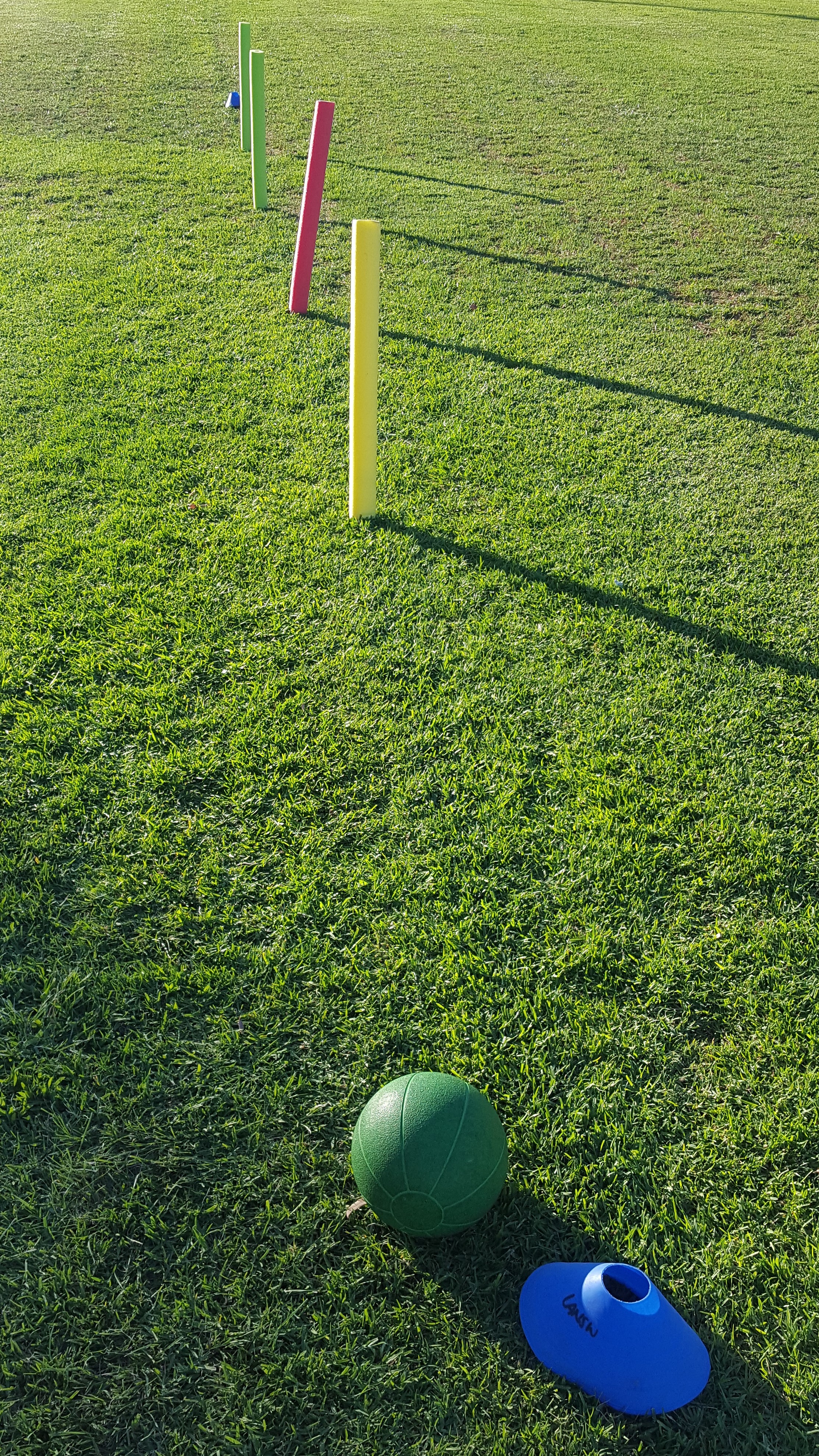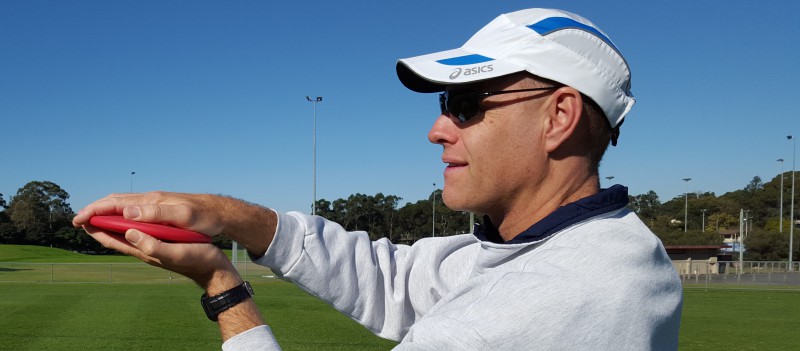Add Variety To Your Sessions With This Highly Versatile Piece Of Training Equipment
Every coach of young athletes should have access to a set of medicine balls as part of their coaching kit.
They are one of my favourite pieces of coaching equipment and I use them virtually every session.
Medicine balls are extremely versatile. Their uses are only limited by the coach’s imagination. Their potential to add variety to movements and progressions to skills is practically endless.

My kit mainly consists of 1kg and 2kg medicine balls. I generally introduce a new skill with a 1kg ball, regardless of the age of the athlete. I then progress the weight if the athlete is coping well. Sometimes there is no need to progress pass the 1kg ball. This will depend on the activity and its intention, and the age of the athlete.
I currently use medicine balls with children as young as 8 years of age, selecting and adapting activities accordingly.
I am often asked for ideas about how to use medicine balls with groups of kids. Below is some of my favourite stuff.
1. Warm Up
Individually
Jog, skip or perform other locomotor movements forward, backwards and sideways while holding a medicine ball, bouncing it or repeatedly throwing it up and catching it.
With a Partner
Perform various locomotor movements while passing or bouncing a medicine ball backwards and forwards with a partner. Movements can include:
- One person jogs forwards, the other backwards.
- One person skips forwards, the other backwards.
- Sidestepping, facing a partner.
Partners can stand back-to-back and twist their torsos to pass the ball to one another, or swap the ball in an “over and under” movement.
In a Group
Throw, bounce or roll a medicine ball amongst a group while jogging, skipping, etc.
2. Individual Challenges
Either as part of a warm up or during a transition between activities I sometimes include individual challenges using a medicine ball. Some of my favourites include:
- Pass the ball around the body.
- Pass the ball around the legs.
- With arms horizontally extended, swing the ball from side-to-side by twisting the body.
- Draw big circles, or a figure 8, in front of the body with the ball.
- Standing or sitting, pass the ball in a figure 8 under and around the legs.
- Perform squats. Throw the medicine ball up above the head with a pushing action while extending the legs; catch the ball as descending in the squat.
- From a sitting or supine position, throw a medicine ball up into the air and stand to catch it on the full before it bounces.
- Stand and hold the medicine ball between the feet. Jump to throw the ball up with the feet and catch it in the hands.
3. Movement Skills
Use the medicine ball to introduce, develop and extend big fundamental movement skills related to your sport. Track and field examples that I use include:
Shot Put
Throw for distance, accuracy, to a partner or up against a wall using a variety of pushing movements from the chest or shoulder. Use one or two hands. Kneel on one or both knees. Stand with feet parallel or with one foot forward and one foot back.
Discus
Sling the ball for distance, accuracy, to a partner or up against a wall using one or two hands, kneeling or standing. Alternate sides of the body.
Javelin
Throw for distance, accuracy, to a partner or up against a wall using a soccer-style throw forward from overhead.
Long Jump
I use a medicine ball caber toss to develop standing long jump capabilities. A caber toss consists of a forward underhand throw, using extended arms from a squat position. It very much resembles the skills required for a standing long jump. I go as far as having athletes caber toss a medicine ball into a long jump landing pit. I will then have the athletes perform a few standing long jumps, with the aim of some skill transfer. An advanced progression is asking the athletes to caber toss into a long jump pit, immediately followed by a standing long jump as part of their follow-though.
Acceleration Skills
One of my favourite activities is a medicine ball push and chase, excellent for developing explosive acceleration and also throwing skills. For this activity, the athletes perform an explosive medicine ball push from their chest and then sprint after the ball in an attempt to catch it after only one bounce. (No diving for the ball allowed!) I have started recording athletes’ personal bests for this activity. Their personal best is the furthest point at which they can land the medicine ball and then collect it before it bounces a second time.
4. Strength Training
I am a fan of using whole body strength development exercises with young athletes. Some of my favourites include:
- Face a partner in a prone push-up position and push a medicine ball back and forth to each other, using an alternate hand each time.
- Bear crawl, crab walk, inchworm, etc, while pushing a medicine ball along the ground in front with the hands. Add the challenge of moving through obstacles or around a slalom course. A further challenge can be included by having to avoid a second person performing the same challenge from the opposite end.

5. Constraint-Based Skills Progression
Manipulate the difficulty of skills to challenge and progress athletes by introducing a medicine ball to drills and activities. Examples include holding a medicine ball overhead during sprint drills, running and hurdles drills.
Share Your Ideas!
Have you used medicine balls during your sessions with young athletes? Let me know what has worked for you. I’d also love to hear if you come up with some ideas as a result of this article. Share your ideas by leaving a comment/reply or by using the below contact details.
If this post helped you please take a moment to help others by sharing it on social media. If you want to learn more I encourage you to leave questions and comments or contact me directly.
Darren Wensor is a sports development professional, coach educator, specialist coach of young athletes, and founder of the blog coachingyoungathletes.com. Learn more about him here and connect with him on Twitter, Facebook, Linkedin, or via email. Check out Coaching Young Athletes on YouTube, the Coaching Young Athletes podcast, and the Coaching Young Athletes E-Book Series.


Thanks. Great ideas for using medicine balls for young athletes and the benefits for different disciplines! Here are 2 fun exercises for balance:
1) place a few gymnastic mats on the floor, put medicine balls on the mat and let athletes practice balance (barefoot) on the medicine ball. First with help, then alone, on two legs, on one leg, in pairs and throwing a ball back and forth etc.
2) 2 kids standing on a wooden gymnastic bench, each of them holding a medicine ball. They try to push each other out of balance with the balls. No body contact allowed.
LikeLike
Thanks for your input! Darren
LikeLike